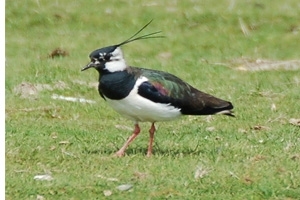Pioneering research breakthrough
 For many reasons the country’s national conservation strategy is not working well enough.
For many reasons the country’s national conservation strategy is not working well enough.
Without a focus on solutions that achieve greater breeding success, local declines may become local extinctions.
There is evidence that this is happening right now, and it may become more and more prevalent unless some fundamental questions are answered soon.
Critical questions to answer
• Why is the breeding success of waders such as the lapwing so poor?
• What is disturbing the nests?
• What is eating the eggs?
• Can we translate game management principles so that they are adopted by conservation organisations across the UK to benefit other wildlife?
• Can we move national conservation policies to focus on breeding success rather than just habitat improvement?
In the upland moors at Otterburn, our scientists painstakingly recorded the effect of managing sites for habitat alone against sites that also included selective predator control. The results were amazing. In fully managed sites, waders were three times more likely to raise a chick. On the sites that were managed for habitat only the breeding success was so poor it could not even sustain the existing population levels. We need to find out how to translate this thinking to the low ground.
Lapwings Facts
For over 2000 years the lapwing’s annual breeding cycle has marked the changes in the rural landscape, whether on the Welsh hills, the Scottish highlands or the arable fi elds of the southern counties. And the joyous sound of a fl ock of lapwings overhead is a true harbinger of spring. So, what else do we know about this much loved British bird, the lapwing… and its crucial role in nature’s balance?
How will we do it?
Stage 1 - Assessing the cause of nesting failure We will scientifically monitor sufficient nests to establish the cause of nest failures. With the funds currently available we can do this using temperature loggers the size of a watch battery placed into nests during the breeding season.The loggers record nest temperature every two minutes and when a nest is predated, the temperature changes to ambient. The timing of this event is indicative of the likely predator.
Hence predation at night is most likely to be by mammals, typically foxes or badgers, whereas during the day it is more likely to be corvids or gulls. However if we can raise enough funds in this appeal, we will install remote cameras so that we can see exactly what happens 24 hours a day. With your help we can greatly enhance the data collected.
Stage 2 - Demonstrating a practical solution We can act once we are clear about which species are the main nest and chick predators. In the uplands we discovered that reducing pressure from certain predators allowed wader birds, such as the lapwing, to successfully raise three to fi ve times more chicks, thereby reversing the declining populations.
Stage 3 - Changing our national approach to conservation Updating the nation's approach to conservation could transform the prospects of lapwings and many other declining species. As soon as we understand how to apply our techniques practically on the ground we can then encourage farmers and wildlife organisations to adopt them nationally.
For populations like the lapwing, that attempt to nest but fail to produce enough young to sustain their existing numbers, never mind recover, the answers cannot be found fast enough.
This work is complex and has wide reaching implications for other species at risk of local extinction. We have commenced work on the interaction between habitat quality and predation rates on lapwings but now need further funds to generate information that is sufficiently robust to support a revision of national conservation strategy for declining species. With your support we can do just that.
- £63 covers the cost of buying and placing a miniature temperature logger in the bottom of the nest; it can be recovered if the nest is disturbed to inform the likely cause of damage.
- £154 buys the scientific time to monitor a hen on her nest, at least every four days, to check if she is successful in producing any chicks, or if the eggs have been stolen and to recover the temperature logger data.
- £592 will buy a remote camera to watch a hen sitting on her eggs 24hrs a day, so that we know exactly what happens. These have to be sighted extremely carefully to avoid betraying the nest’s location.
- £1,186 covers the cost of buying a remote camera and contributes to the scientific time required to monitor a lapwing sitting on her nest during the vital breeding season.
Please support this appeal today.
We must make the commitment to finding the funding for this research which will help us to take another important step in restoring a balance for game and wildlife in our countryside.